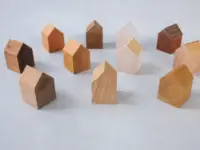Tessellation, typically, is defined as the method of tiling floors such that neither any gaps remain nor does any overlapping exists with the help of shapes. Generally a tessellation is formed when a certain shape repeats time and again and covers whole of the particular plane. Regular polygons are known to consist of either 3 sides, 4 sides or 5 and more angles and sides which are equal to each other. Such a tessellation that is formed by means of regular polygons is termed as a regular tessellation. Three kinds of polygons (regular in nature) are known to show tessellation in Euclidean plane; namely: squares, triangles or hexagons.
It is a known fact that tessellation for regular polygons occurs only in case if the interior angles measure up to even divisors of 360 degrees. In simpler terms the reason behind this fact is that the internal angles’ sum ought to be equal to 360 degrees. This rule is evident in three kinds of polygons only which are hexagons, squares and triangles. Other types of polygons do not fulfill the requirement thus they aren’t considered to be the regular polygons capable of tessellating. The patterns in the regular tessellation are indistinguishable at each and every vertex.
The underlying reason behind the tessellation of the regular polygons is the sum of degrees at every vertex. In case of triangles each vertex shows an interior angle of 60 degrees adding up to a total of 360 degrees, hence a tessellating polygon. Similarly in case of squares and hexagons the sum of interior angles of both shapes adds up to form a total of 360 degrees hence signifying that both these shapes are included in the regular polygons capable of showing tessellate behavior. This is how regular polygons tessellate.













Leave a Reply